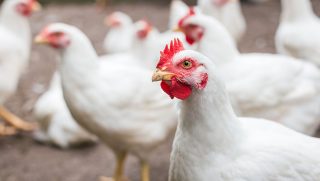In a couple of days, many families will be sitting down to a meal and stuffing themselves silly in celebration of Thanksgiving — and, oh, it’s deliciously wonderful. Whether this is your first time making Thanksgiving food or the 50th time, a lot of myths are out there about “proper” food safety. In a blog post last week, Foodsafety.gov sought to dispel some of those myths. Here’s what they had to say …
1. Myth: Leave food outside to keep it cold
Fact: Sure, you can do this if you want to risk animal contamination (this can be domestic or wild animals) and likely temperature variations. We know the refrigerator is overflowing, but try keeping coolers packed with ice on hand for the extras. If food that should be refrigerated rises above 40 degrees, which can easily happen to something sitting outside in plastic wrap or a storage container, then you only have about two hours to eat it or toss it.
2. Myth: You can’t cook a frozen turkey
Fact: Don’t worry, this can be done, though it’s best to give yourself at least 50 percent longer for it to cook. And if you cannot separate the giblet package from the turkey at the start, remember to remove it carefully with tongs or a fork a few hours into the cooking process.
3. Myth: The bird is done when juices run clear
Fact: There’s only one safe way to determine when a turkey is safely cooked, and that’s with a food thermometer (you’re looking for the temp to be 165 degrees). The USDA recommends using the thermometer on three spots on the bird: the innermost part of the thigh, the innermost part of the wing and the thickest part of the breast. And yes, the juices will run clear at this temperature, but you won’t risk overcooking it.


